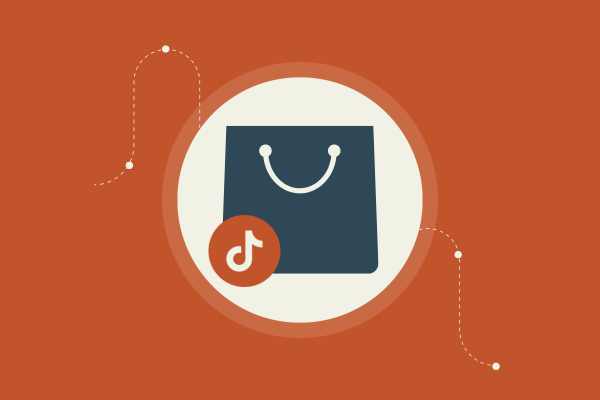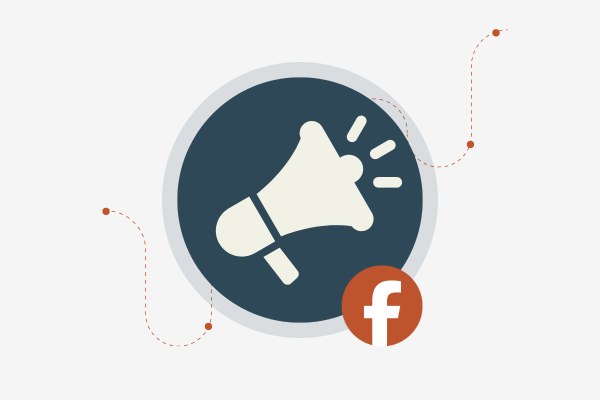The Cost-Plus Pricing Strategy: Unlock Your eCommerce Potential
Is cost-plus pricing the secret sauce for your eCommerce success? You take the cost of your product and add a markup. Boom, you have your price. It's straightforward and easy to understand, making it appealing for many business owners. But, does it really help you win the pricing game in eCommerce?
You need to dive into your numbers here. Know your production costs to avoid losing money. But remember, eCommerce is fierce. Simple cost calculation might not be enough in a competitive landscape. Are you sure it's the best move for your business?
Explore other strategies, too. Cost-plus pricing could be a solid part of your plan, but could value-based pricing give you bigger profits? Weigh the options and see which fits your growth goals best.
Key Takeaways
Cost-plus pricing is easy to calculate.
Know your costs to set the right price.
Compare with other strategies for better profits.
Understanding Cost-Plus Pricing
Cost-plus pricing is a straightforward way to set prices. You calculate all your costs and add a markup to decide the final price. It sounds simple, but there’s more to it. We'll break it down with some specifics.
Basics of Cost-Plus Pricing
Cost-plus pricing involves calculating the total cost to produce an item. This includes everything: materials, direct labor, and overhead. You're looking to cover all these costs and make a profit.
Once you have your total cost, add a markup. This markup is your chance to earn a profit on every sale. It's often a percentage of the total cost.
This strategy makes explaining price changes easier to your customers because they can see what goes into the pricing. So for an item costing $100, adding a 25% markup means the selling price looks like $125.
Calculating Your Markup Percentage
Determining your markup percentage is crucial. This is where you decide how much profit you want. A lot of businesses stick to a standard rate, like 20% or 30%, but it depends on your industry and goals.
To calculate this, think about your desired profit margin. For example, if you want a 20% margin, multiply your total cost by 1.20. This formula gives you the selling price that includes your target profit margin.
Keep in mind, your markup should consider the market and competitor prices. It's not just about covering costs. It's about staying competitive. Mark it up, but make sure it makes sense in your market landscape.
Evaluating Your Costs
When it comes to pricing your products, knowing your costs is crucial. You need to pinpoint both your fixed and variable expenses and factor in overhead to ensure you're covered.
Identifying Variable & Fixed Costs
First up, variable costs. These change with production volume. Think about things like materials and shipping. For example, if you sell T-shirts, your variable costs include fabric, printing, and packaging.
Then we have fixed costs. These stay the same month after month. Rent, salaries, and insurance fall into this category. Whether you make one T-shirt or a thousand, these costs don't fluctuate.
Grab a pen and paper, or fire up Excel. List out every expense. This makes it easier to calculate your total cost. You now see what you need to cover every single expense with your selling price.
Including Overhead in Pricing
Overhead's that sneaky cost that can't be pinned directly to a product but is still vital. We're talking electricity bills, admin salaries, and, yes, that fancy software you use for inventory management.
Don't forget overhead. It's tempting to glance over this when setting prices, but overhead determines how healthy your margins are.
An easy way to account for overhead is by allocating a percentage to every product unit. Let's say your total overhead is $5,000 a month. Divide that by your monthly sales units. Add this to your base product cost. Now you've got a price that includes everything, ensuring you're set to profit in every sale!
Setting the Right Price
Pricing your products right can make or break your eCommerce business. You need to know the balance between your costs, the perceived value, and what the market can handle.
Determining Your Selling Price
First things first, you need to calculate the total cost of getting your product to the customer. Add up the wholesale price, shipping, and packaging expenses. Then decide on a markup to ensure profit.
For example, if a product costs $50 to make, you might choose a markup of 30%, setting the selling price at $65. This ensures you cover costs and earn a margin. But it’s not just about covering costs; it’s also about hitting that sweet spot in your customer's mind.
Conduct ongoing market research to keep your numbers in check.
Understanding Your Market Dynamics
Knowing your market is like having a secret weapon. You’ve got to watch out for both consumer behavior and what your competitors are doing. Who’s your competition, and how are they pricing their goods? This can guide adjustments to your own pricing strategy.
Perceived value plays a key role. If your product is seen as top-notch, you might justify a higher price. But in a crowded space, you might need to be competitive to grab market share.
Look at competitor pricing and market conditions. Stay flexible and ready to adjust as the market shifts. Being too rigid can leave money on the table or customers slipping through your fingers.
Comparison With Other Pricing Strategies
When choosing a pricing strategy for your eCommerce business, it's key to understand how options like cost-plus, value-based, and dynamic pricing stack up against one another. Each approach has its own perks and pitfalls, which can greatly affect your bottom line.
Value-Based Pricing Vs. Cost-Plus
Value-based pricing is all about what your product is worth to your customer. It's based on how much value customers perceive they're getting. This is very different from cost-plus, which calculates price by adding a markup to your costs.
Value-based pricing can lead to higher profits if your product truly stands out. Your product might be a game-changer, and customers might be willing to pay more for it. But it takes serious market research to nail down the right price.
In contrast, cost-plus is straightforward. You know your costs, so you just add your desired profit margin. Easy, right? But it might not reflect customer demand or competitive market prices. Check out Cost-Plus Pricing to dig deeper.
Dynamic Pricing and Cost-Plus
Dynamic pricing adjusts constantly based on demand, season, and more. It's flexible, reacting quickly to market changes. Airlines and hotels are masters of this strategy.
Cost-plus doesn’t budge as easily. It sticks to a fixed markup. While dynamic can boost profits when demand peaks, cost-plus often provides stability with predictable pricing.
Dynamic pricing can require some tech investment to track and adjust prices rapidly. It can also be complex to manage. Meanwhile, cost-plus keeps things simple, which can be great if you want steady prices without the fuss. For more insights into these strategies, explore Competitive Pricing Strategy.
Choosing the right strategy depends on your goals and resources. Consider what fits best with your current operations and growth plans.
Pros and Cons of Cost-Plus Pricing
Cost-plus pricing is like a trusty old hammer in your toolbox. It's simple and gets the job done. But is it the best tool for every job? Let’s break down why it might be just what you need—or why you might need a different tool.
Advantages of Cost-Plus Pricing
First up, simplicity. You start with your costs and tack on a percentage for profit. No guesswork, just straightforward math. This means less stress and fewer headaches when setting prices.
Then there's profitability. With cost-plus, you decide the margin. Set it to cover costs and ensure profit. This can help you stay in the black even if customer demand shifts or the market wobbles. In a world of elastic demand, knowing you’ve got a grip on margins helps you sleep better.
Finally, transparency. It’s easy to explain why your prices are what they are, which can build trust with customers. When customers understand your pricing, they might be more likely to buy, especially when trust is key in eCommerce.
Downsides to Consider
Now, let’s talk disadvantages. Cost-plus pricing doesn’t consider competitors. You might end up pricing too high or low compared to others. This could hurt your market position.
Elastic demand is another hiccup. Customers might be price-sensitive. A small price change could shift demand significantly, and cost-plus doesn’t account for this. You might lose out if you don’t keep an eye on market trends.
Finally, the method is a bit blind to customer demand. Set prices based on cost, and you might miss what customers are actually willing to pay. This can leave money on the table, especially if customers are interested in premium offerings.
Implementing Cost-Plus Pricing in eCommerce
Cost-plus pricing is all about setting your prices by adding a markup to your total costs. This strategy is straightforward, but it needs a touch of personalization to work for your eCommerce business. Let's dive into some best practices and ways to personalize this strategy to boost your conversion rates and keep customers coming back.
Best Practices for Online Retail
To succeed with cost-plus pricing in eCommerce, focus on calculating your total costs accurately. This includes product costs, shipping, packaging, and any other overhead costs like marketing. Once you know your costs, add a consistent markup that ensures profit without scaring off buyers.
Keep an eye on competitor pricing. Make sure your prices are competitive. You don’t want to lose customers because of a few bucks. Use tools to track pricing trends and adjust quickly if needed.
Stay flexible. Use your customer data to adjust prices for different segments. For instance, if your buyer personas show a particular group is price-sensitive, consider offering discounts or loyalty programs.
Personalizing Your Strategy
Understanding your audience is key. Tailor your pricing to different buyer personas. Think about what matters most to them. Some may value fast shipping more than a lower price. Use this info to decide on your markups and promotions.
Leverage customer feedback. Keep an eye on conversion rates and customer retention stats. If you notice a dip, it might be time to tweak your pricing strategy. Consider personalized offers to boost loyalty.
Integrate technology. There are many tools out there that help you customize pricing based on customer behavior and preferences. This not only improves customer satisfaction but can also boost your eCommerce brand reputation. Always adapt and refine your pricing while keeping the customer at the heart of your decisions.
Monitoring and Adjusting Prices
Being flexible with prices is key in eCommerce. Keep an eye on the market and adjust your prices to stay competitive and profitable. Here's how you can do it effectively.
Assessing Market Trends
It's all about knowing the playing field. To keep your market share strong and understand the competitive landscape, dive into market demand and current trends. Tools like Google Trends and industry reports help you stay in the loop. You don’t want to miss shifts in customer preferences—they could impact your pricing decisions directly.
Don’t just look at your industry. Check out what the big players are doing across different sectors too. They can give you insights you might not find in your own niche. Use this info like a pro. Analyze data regularly to see where the market is headed.
Making Profitable Price Adjustments
Get ready to make moves. It's not just about knowing trends—it's about leveraging that knowledge. Change prices smartly based on solid data analysis. Look at your costs, your profit margins, and where your competitors are standing.
Price adjustments should be timely. You want to react, but not in a way that feels desperate. Always aim for improvements in market share without slashing prices too low. Replace guesswork in pricing decisions with insights. Every change should make sense both financially and strategically. Keep your pricing dynamic and tuned to what will bring in the customers while keeping profitability high.
Advanced Techniques and Tools
Understanding advanced methods and using the right tools can supercharge your eCommerce pricing strategy. These techniques let you analyze and adjust prices dynamically, giving you an edge in a competitive market.
Leveraging Pricing Tools
Having the right pricing tools is a game-changer. These tools can automate and optimize your cost-plus pricing approach. You’ll find pricing tools that not only calculate costs but also suggest optimal price points.
Use these tools for real-time pricing adjustments. Track competitor prices and adjust yours to stay competitive. Many tools offer dashboards and analytics to monitor performance, giving you insights into what’s working and what’s not. The ability to automate repricing based on market trends saves time and minimizes error. Pick tools that integrate smoothly with your eCommerce platform.
Integrating Data Analytics
Data is everything. It tells the story of your business. With data analytics, you can dive into consumer behavior, sales trends, and more. This allows you to fine-tune your pricing strategy beyond just adding a markup.
Embrace dynamic pricing strategies by analyzing real-time data and market trends. Set prices based on demand, competition, and even customer segments. This way, you’re not just guessing your prices but basing them on solid data. Engage in competitive analysis to understand where you fit in the market and adjust accordingly.
Analytics tools can make it easy. Use them to identify patterns and predict what price point will maximize profits. This proactive approach can make a huge difference in staying relevant and profitable.
Scaling Your eCommerce Business
To scale your eCommerce business, focus on building customer loyalty and expanding your market reach. These strategies help you grow without blowing up your costs.
You want more buyers who stick around and new markets that boost your brand. Let's dive into the nitty-gritty of making this happen.
Driving Customer Loyalty
Customer loyalty is king. Loyal customers spend more, stick around, and bring in new leads.
Start with killer customer service. Answer questions fast, deal with problems, and treat every shopper like they're your best friend. Happy customers talk!
Consider a reward program. Points, discounts, and exclusive offers keep people coming back. It's like a game, but you're winning too.
Punch cards, digital points, whatever fits your brand. Just make sure it’s easy to join.
Communicate. Keep in touch with email or SMS. Share tips, updates, and more. People love feeling special.
Your email isn’t just an inbox clogger. It’s a lifeline to their next buy.
Expanding Market Reach
To expand your market, start with data. Know your customer, where they shop, and where they hang out online. You gotta fish where the fish are.
Targeted online ads can be magic if you use them right.
Boost your brand's presence through SEO and social media. Get your name out there. Use platforms your audience loves. Make your content engaging and valuable.
Consider new markets or products. If you’ve nailed it locally, maybe it’s time to go international.
You don’t need to be Amazon, but small steps can have big impacts. Keep costs low while testing new waters. Use partnerships that help you grow without stretching too thin.
Conclusion
Thinking about your pricing strategy? Cost-plus pricing is simple. You add a percentage to your product costs. This method ensures you cover costs and make a profit. But is it for you?
Pros: It’s straightforward. Your math is clear. Costs are recovered, and profits are clear.
Cons: Market changes? Competitors cutting prices? Cost-plus doesn't account for those.
You're aiming for revenue goals, right? Cost-plus might keep you safe. But it won't always push you forward.
Look at what your competitors are doing. Sometimes, chasing the market means adjusting your strategy.
Pricing decisions shouldn’t be one-size-fits-all. Think about other strategies too. Maybe you blend them. Maybe you don’t. Your business is unique.
Is cost-plus right for you? Maybe. Only if it fits your needs and goals. Evaluate. Test. Decide.
In the end, the best strategy is the one that aligns with your business vision and market conditions. Keep exploring until you find the perfect fit.







